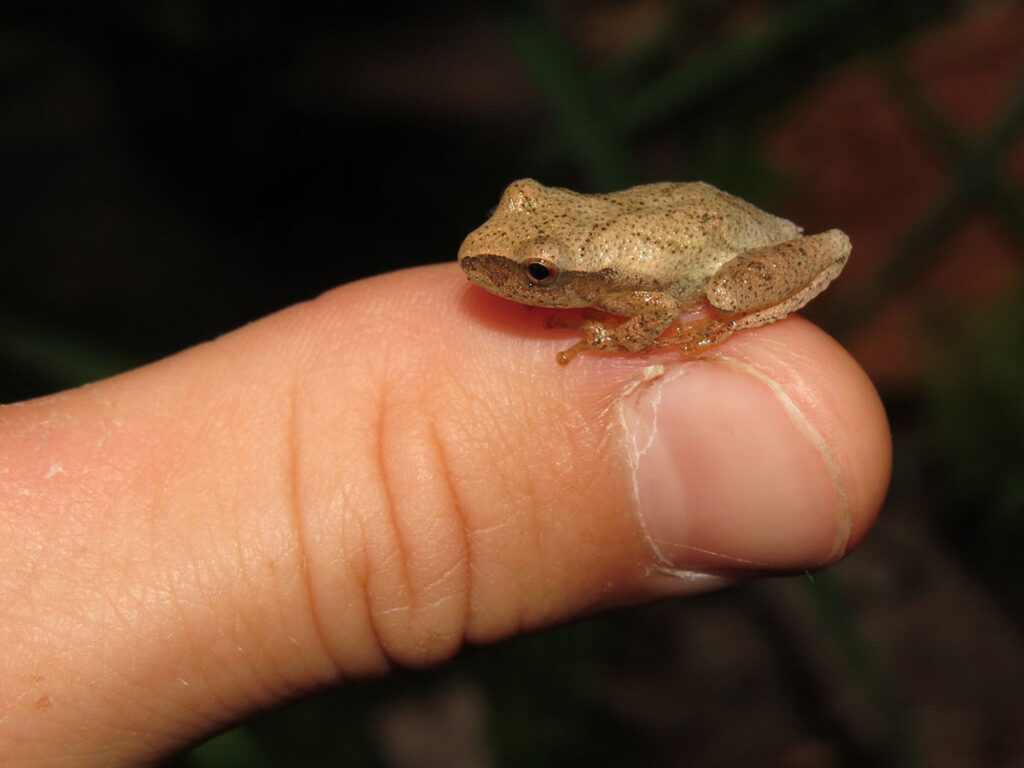Featured Image Credit: “spring peeper” by aecole2010 is marked with CC BY 2.0.
Although I have grown up with Peepers as the requisite spring chorus, I have never ever seen one. Typically they hide in the leaf litter, and they are both similar colored, and so tiny, that you just can’t spot them. In addition, you may hear them calling, and slowly walk toward the creek, tip toe-ing and asking your shadow to just quit it already, but as soon as you’re 100 feet away, they all fall silent. I imagine them with cartoon eyes wide and a pursed mouth, waiting for me to pass.
For me, they have a special significance. Since moving out of the house, the first day in late winter/early spring when my mom would hear the peepers, she would call me immediately. If I didn’t answer the phone, I got a voicemail “I hear the first peepers!” she would exclaim, and hold the phone out to record the chorus for me. I started doing the same thing to her. It was a touching ritual of connection.
Without fail, the moment I hear the peepers down the hill near the stream, usually that first wet warm day in February, I get so excited, and think to myself, “I hear the first peepers, Mom!” It’s over a decade since she died, and every year we still share that moment.
It’s very fascinating to know that “the species can tolerate the freezing of some of its body fluids, and undergoes hibernation under logs or behind loose bark on trees. It is capable of surviving the freezing of its internal body fluids to temperatures as low as -8 °C (17.6 °F).” (From wikipedia.org)
Size: 1-1.5 inches long Family: Hylidae Habitat: They live primarily in forests and forest edges, where there are ponds, streams, marshes, swamps, or ephemeral/semi-permanent wetlands. Identification: Peepers are primarily brown or tan, sometimes gray or olive green, with patterning on their back that resembles an "X". They have a light pale yellow coloration on the inside of their thighs. Males are slightly smaller than females, and are the only ones that make the classic high-pitched "peep" of which they are known for.










